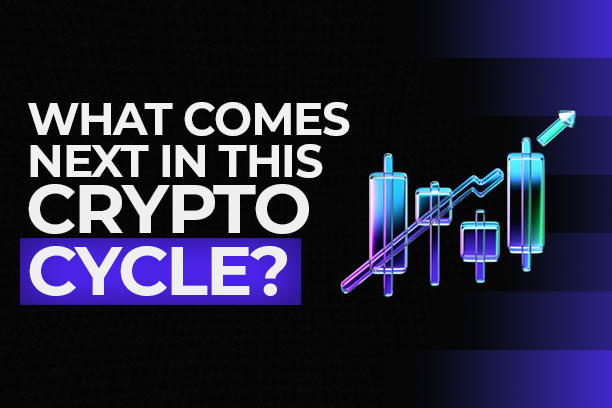Crypto doesn’t live in isolation anymore. With platforms like Kraken eyeing competition with fintech giants like Revolut and Wise, the writing on the wall is clear: we’re not just building financial infrastructure. We’re building experiences. And in this next cycle, the battleground won’t just be yield or decentralization—it will be usability, tokenized rails, and narrative clarity.
This is the future that Matthew Howells-Barby, VP of Growth at Kraken, hinted at in his conversation on The CoinRock Show. But his comments also underscore a deeper truth: the next wave of adoption isn’t about repeating crypto’s past. It’s about rewriting it—on terms people actually understand.
“No one’s gonna know what chain they’re on, right? It’s gonna be a Extracted away,” he said
“It’ll be the same with stable coins. You know, you’re gonna make a payment and not really know what you’re gonna make that through.”
The End of Isolation: Crypto vs Fintech Is Now
It’s no longer enough for crypto companies to serve crypto natives. Kraken, for instance, is openly setting its sights on traditional fintech incumbents.
“We do see ourselves competing with the Wise, the Robinhoods, the Revoluts of the world,” Matthew said.
“They’ve all done stuff really well… and we want to play in that space.”
But this isn’t a turf war over UI design or fiat onramps. It’s a strategic pivot in how crypto defines its relevance. Fintech apps win on simplicity, habit, and clarity. Most crypto apps, in contrast, still rely on cultural buy-in and niche fluency. The industry’s UX debt is massive—and closing that gap may be the only way to onboard the next hundred million users.
So yes, crypto platforms are now fintechs. But the question is: can they out-experience the incumbents?
“I really think that we’ve got a lot of people still sitting on the side, waiting to come in.”
The Bet That Might Actually Work
Amid meme coin mania and endless L2 launches, there’s a quieter revolution underway: tokenized real-world assets. From money market funds to private credit, the rails are being rebuilt—and the capital is starting to notice.
“The route through which we power everything is through crypto,” Matthew revealed firmly.
“Whether that be through equity, through the rails and everything in between. And this is what enables us to build more great on-chain products, more great consumer experiences that may be completely abstracted from crypto, but ultimately utilize it in some way to deliver a value add for customers.”
This is where the future becomes modular. Tokenized equity, bonds, and credit are no longer just buzzwords—they’re primitives that can be abstracted into fintech-like apps with real value props. When BlackRock, Templeton, and other asset giants start dropping billions on-chain, you don’t ignore the signal. You ask what user experience will win when everyone is building on the same rails.
Crypto’s infrastructure is maturing. But the real innovation lies in what you build on top of it.

Crypto UX Is the New Frontline
We’ve said it before: tech doesn’t win—experience wins. And in Matthew’s own words, the apps that broke into the mainstream last year didn’t do so through tokenomics or whitepapers.
“One good one was Moonshot… it captured attention because UX was done really well,” he observed.
“It showed you could bring regular consumers into crypto.”
Moonshot wasn’t a financial revolution—it was an interface revolution. That’s the wake-up call. Crypto-native products still tend to assume their users are technically fluent, privacy-savvy, and yield-hungry. But the next wave isn’t interested in any of that. They want ease. They want clarity. They want tools that feel intuitive, not ideological.
Until crypto can offer that consistently, it’s not a mainstream financial alternative—it’s a niche subculture with capital.
The deeper irony in the “crypto vs fintech” conversation is that crypto doesn’t need to become TradFi to beat it. In fact, it’s when crypto leans into its edge—programmable money, tokenized incentives, global composability—that it actually sets itself apart.
“I think we wanna make some measured bets to do stuff that people haven’t done before. I think things like tokenized equity is one small example, right? Where it’s like this thing is either gonna really take off and do really well.”
This is the thesis: the future of finance doesn’t need to look like a neobank. It can be invisible. Crypto can be abstracted, embedded, and enhanced—not to hide its roots, but to elevate its purpose.
And that’s how you win. Not by mimicking Revolut. But by building tools Revolut could never imagine.
Crypto’s Future Hinges on Better Products, Not Louder Narratives
This isn’t about replacing TradFi—it’s about outpacing it. And the winners in crypto’s next chapter won’t be the loudest brands. They’ll be the ones who build tools that work for real people, abstract complexity, and deliver value faster than TradFi can pivot.
“We haven’t even come close to the peak of this cycle,” Matthew said.
He’s right. But it’s not just about price. It’s about relevance. And relevance is earned one experience at a time.
Whether it’s tokenized equity, simplified onboarding, or full-stack crypto banking, builders want to build infrastructure that feels like magic and works like legacy finance — only better.
So while the market argues about catalysts, real builders are focused on one: the apps and tools that actually work.
Because in the end, true adoption won’t be loud. It’ll be useful.





